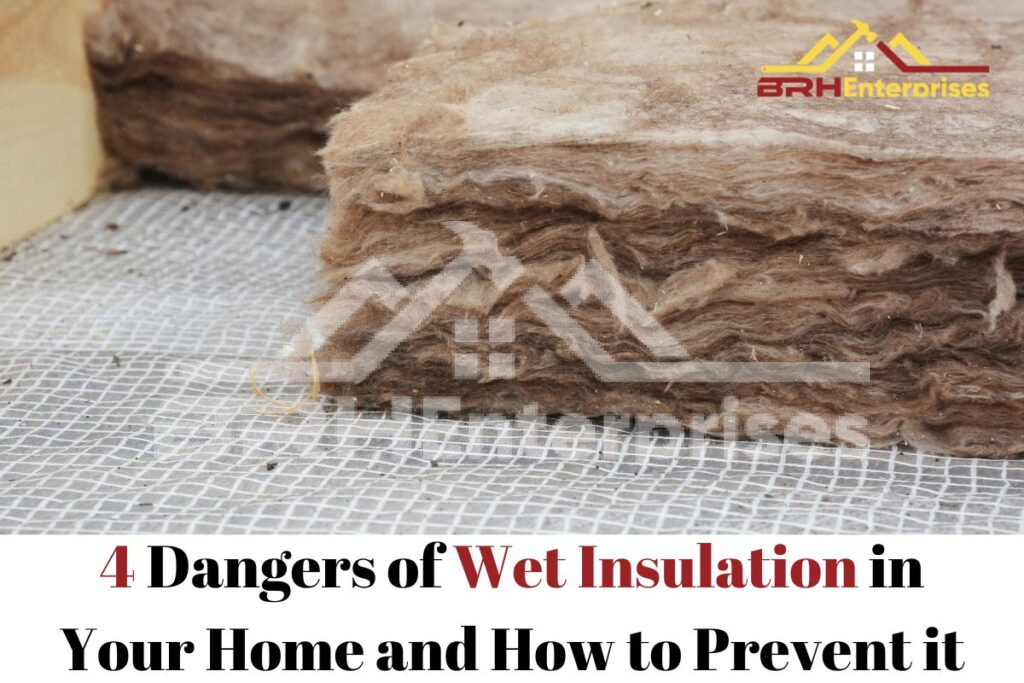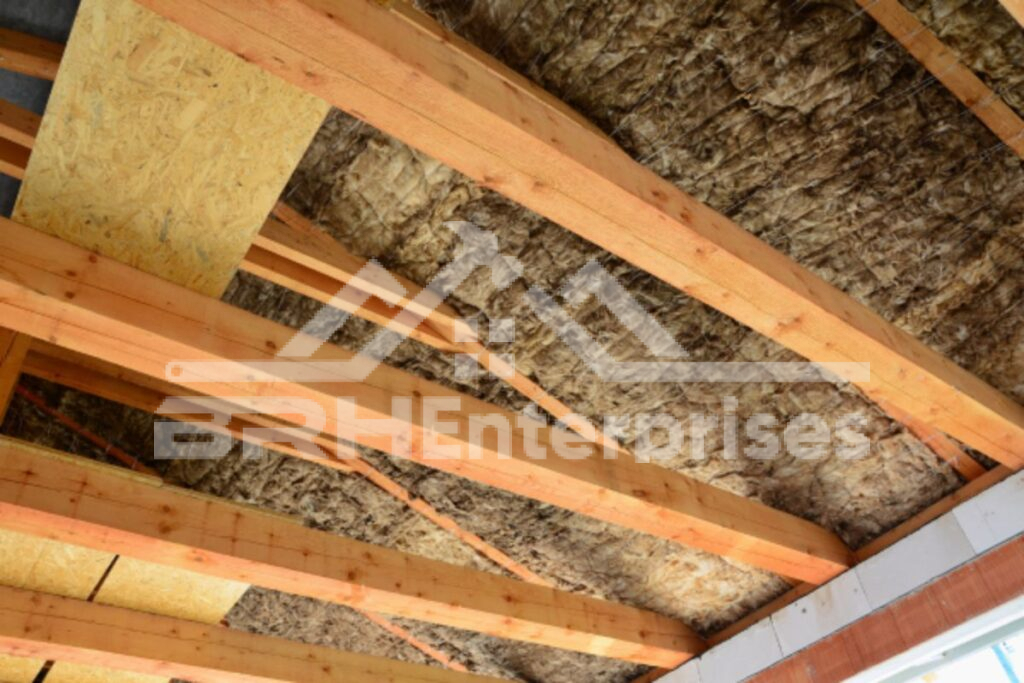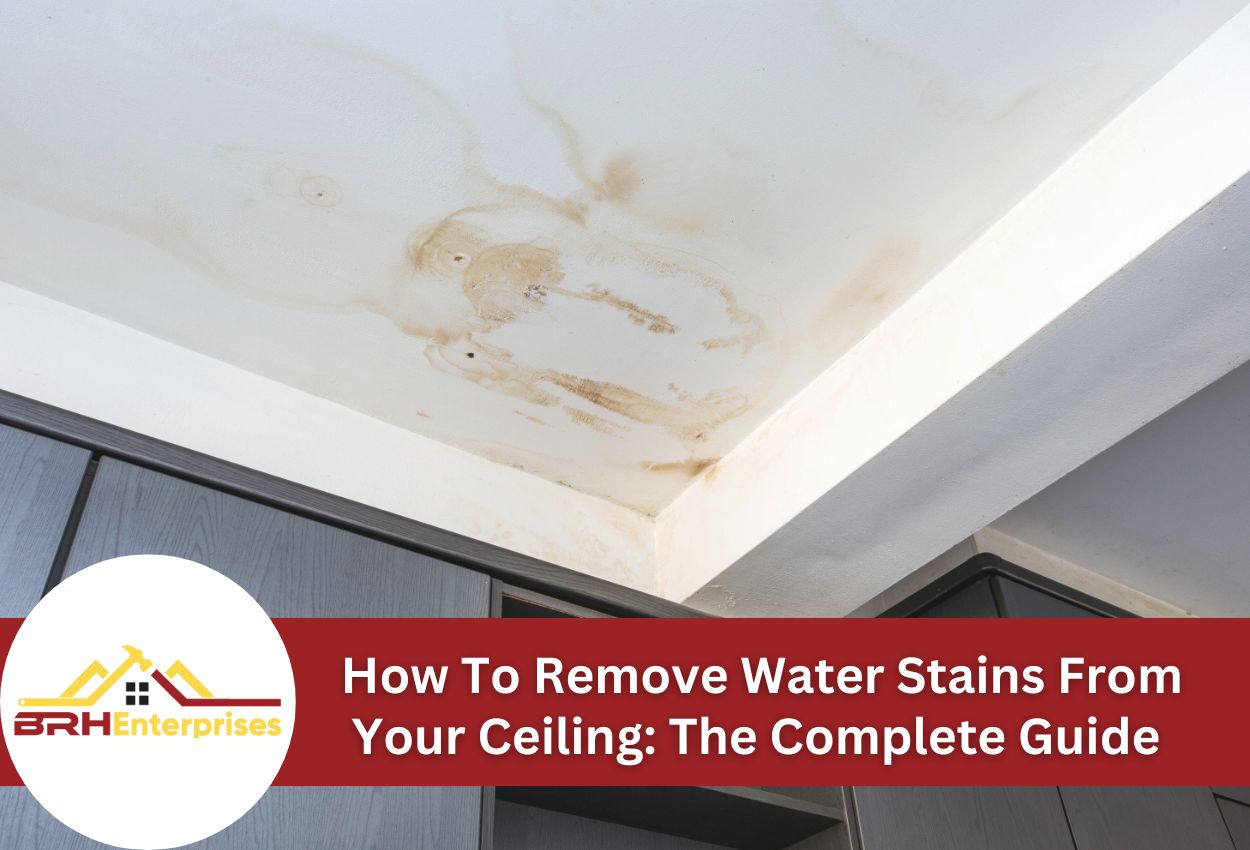
An essential feature of every home is insulation, which offers both comfort and energy efficiency. But, if your insulation gets wet it can cause a number of issues that endanger the health of your house. In this blog post, we are going to look at four risks associated with wet insulation and ways to prevent it in the first place.
4 Dangers of Wet Insulation in Your Home
Keeping your home safe and dry is the first priority of every homeowner, and it’s important to keep an eye out for signs of water damage, including wet insulation.
Let’s delve in to understand what happens when insulation gets wet and compromises the safety and well-being of your home.
#1. Mold and Mildew Growth
Mold growth in homes is a sign of a moisture or water issue and should be addressed right away. Moisture trapped in insulation creates an ideal environment for mold and mildew to thrive, possibly resulting in unpleasant odors. Leaks from the roof or the plumbing, high humidity, or ground moisture are common causes of wet insulation.
Certain insulation materials, like cellulose, may degrade and develop mold if not dried promptly. While spray foam is generally water-resistant, it can trap water between its surface and nearby materials, such as wood wall studs, causing rot and mold growth.
The best way to prevent mold or mildew is to keep your home dry. If only a small section of the insulation is damp, it might dry on its own or with the help of a fan. However, if large sections are wet, the insulation is thoroughly soaked, or nearby materials are affected, it’s often best to remove everything and fix the damage to prevent long-term mold and mildew growth. Once moisture sets into the insulation and surrounding materials, it can impact the air quality in the home, causing health issues.
Wet insulation presents notable health hazards. Exposure to mold spores can result in various respiratory issues, including throat irritation, headaches, and worsened symptoms for those with pre-existing lung conditions. Moreover, mold exposure has the potential to trigger allergic reactions and worsen existing allergies.
#2. Fire Hazard
Wet insulation increases the risk of fire hazards by enhancing the conductivity of materials around electrical wiring. Moisture acts as a conductor, facilitating the flow of electricity through the insulation, leading to higher chances of short circuits and electrical fires. Additionally, wet insulation can degrade materials, especially those with flammable components, making them more prone to combustion.
Fire-retardant properties in some insulation materials may weaken when exposed to moisture, compromising their ability to resist flames. Proximity to heat sources, like appliances or electrical systems, further elevates the fire risk. To prevent these hazards, promptly address water leaks, replace damaged insulation, and ensure proper installation of new materials.
#3. Structural Damage
When parts of a building stay wet due to compromised insulation, it can lead to serious problems. Wet insulation can affect nearby structural elements like wooden beams. This ongoing exposure may cause wood rot, weakening the structure and causing sagging floors. In structures with metal components, prolonged moisture can induce corrosion, making the overall structure less stable.
Moisture from wet insulation can infiltrate the foundation, causing cracks and further jeopardizing the stability of the entire structure. Wet insulation is also heavier, potentially straining the framework and causing more problems. Continuous moisture exposure can make materials crack, warp, or break, indicating structural stress.
#4. Increased Energy Costs
Wet insulation can significantly increase energy costs as it may lose 40% of its heat retention ability, causing higher heating and cooling bills. The U.S. Department of Energy suggests proper insulation can save homeowners up to 15% on these costs, contributing to a 10% reduction in total energy usage. Wet insulation makes heating and cooling systems work much harder, leading to higher energy consumption and more expensive bills.
This occurs because wet insulation loses its resistance to heat transfer, allowing more heat to escape in cold weather and making air conditioning less efficient in hot weather. To address this, it’s crucial to identify moisture sources, replace damaged insulation, and consider water-resistant materials for dry and effective insulation.
To prevent these issues, it is crucial to remove wet insulation promptly.

How to Prevent Wet Insulation
Now let’s learn how to prevent wet insulation in the first place. Here are some steps you can take to protect your home:
#1. Ensure Proper Sealing and Ventilation:
Maintaining the overall integrity of your roof and gutters is vital to safeguard your home from water intrusion and potential insulation damage. Regularly inspect and address any damage or blockages in the gutters to prevent leaks. Adequate ventilation is equally important. Utilize extractor fans in areas like the kitchen and bathroom, ensure unobstructed wall vents, and keep window vents open when possible to promote proper air circulation and minimize moisture build-up.
#2. Maintain Your Home:
Implement regular roof maintenance practices to identify and fix potential problems that could compromise your insulation. Regularly check and properly seal any potential sources of water leaks in your plumbing system, appliances, attic, and roof. This proactive approach helps safeguard your insulation from moisture-related issues. By incorporating routine maintenance into your home care routine, you can actively prevent and address problems that may affect the integrity of your insulation.
#3. Address Moisture Build-Up:
Take proactive measures to prevent indoor moisture build-up. Ensure your home is well-ventilated and promptly address any areas that become wet to prevent potential damage to the insulation. By maintaining a dry indoor environment, you can protect your insulation from the detrimental effects of moisture.
#4. Use Moisture-Resistant Insulation:
Consider utilizing moisture-resistant insulation, such as spray foam or closed-cell foam insulation, especially in areas prone to moisture or potential water damage. These types of insulation provide an additional barrier against moisture infiltration, helping to preserve the effectiveness of your home’s insulation and avoiding issues associated with wet insulation.
By following these steps, you can ensure that your insulation remains dry, functional, and free from potential problems associated with moisture damage.
Also Read: Does Spray Insulation Remove the Need For Roof Ventilation?
How Long Does It Take Wet Insulation To Dry?
The type of insulation, ventilation, temperature, and the humidity all play a role in determining the drying time. Typically, if the insulation does not dry within 2 or 3 days, it is advisable to remove it to prevent mold growth and wood decay. In cases where moisture originates from the inside of a wall, the insulation should also be removed promptly.
If the insulation is extensively soaked or if nearby materials have been affected, it is often best to remove it as soon as possible. Swift removal, coupled with repairing the damage, helps to prevent other long-term issues like structural problems. If you decide to remove the insulation to facilitate drying, laying out the batts for ten days or longer may be necessary.
Does Wet Insulation Always Need to be Replaced?
Whether you should replace it depends on the type of insulation, how it reacts to moisture, and how much damage there is. Here’s a quick guide:
1. Fiberglass Insulation:
If fiberglass insulation is very wet, replace it to avoid harming any nearby wood. If it’s not too wet, use fans or a dehumidifier. If that doesn’t work, take the batts out and let them dry in the sun or a warm area.
2. Open-Cell Spray Foam Insulation:
This type of insulation does not absorb water, so it often dries out on its own if wet. If there is significant moisture, it may need to be replaced.
3. Cellulose Insulation:
Though cellulose insulation is considered to be absorbent, it can be removed and dried if a small section gets wet.
To prevent wet insulation, make sure your home is well-ventilated. Use extractor fans, dehumidifiers, or open windows to control moisture. If you’re unsure about the damage, consult a professional insulation specialist to decide if it needs to be replaced.
Conclusion
Understanding the dangers of wet insulation is crucial for maintaining a safe and energy-efficient home. Regular inspections and prompt action with BRH Enterprises can prevent these issues, ensuring your insulation continues to protect your home effectively. Don’t let moisture compromise your comfort and well-being—take proactive steps to address wet insulation.
Need Help With Wet Insulation? We Have Got You Covered!
Experience the difference with BRH Enterprises—from premium materials to dependable roofing and home exterior services, we’re your trusted partner for every step. During your free consultation, we will discuss the finest options for your home. Let us protect your home from damage caused by wet or insufficient insulation. Call us at (920) 249-4228 today!





